THE EDIBLE OUTDOORS #22 - YELLOW DOCK

Yellow Dock is one of those wild edibles that is about as common as it is overlooked.
Though I’ve grown up seeing this plant almost all of my life, it wasn’t until more recently that I learned more about it, and that it was also edible.
DISCLAIMER: In this series I am simply trying to share some of my adventures in the wild and information that I am learning. I am not a professional nor am I trying to give dietary or medical advice. I'm just a man on a journey sharing about what I am encountering. I believe that the plant in the photos has been accurately identified and I have consumed it without side effect.. so far. Enjoy!

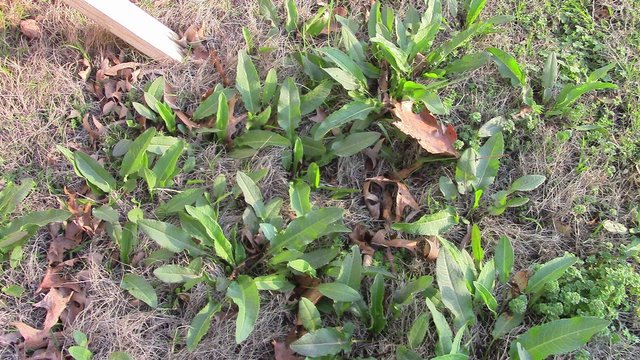
IDENTIFICATION
Yellow Dock (Rumex crispus) is also known as Curly Dock. It is a perennial originally native to Asia and Europe, but it has been naturalized around the world, and is a common “weed” across the United States. The leaves are almost “feather-shaped” and can grow to more than a foot long. Their wavy characteristic is what has led some to call it Curly Dock.
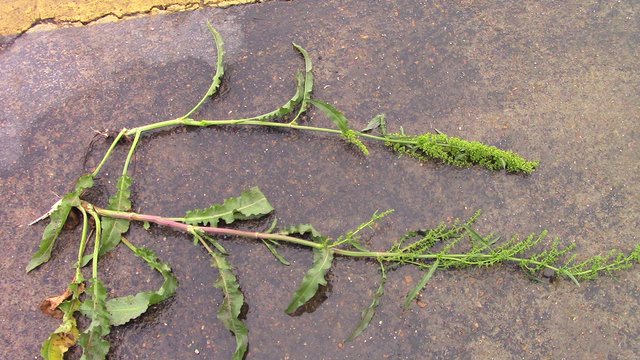
As the plant grows, it eventually shoots upward on a center stalk. The stalk becomes covered in seeds, and reminds me almost of the Rhubarb seed stalk.

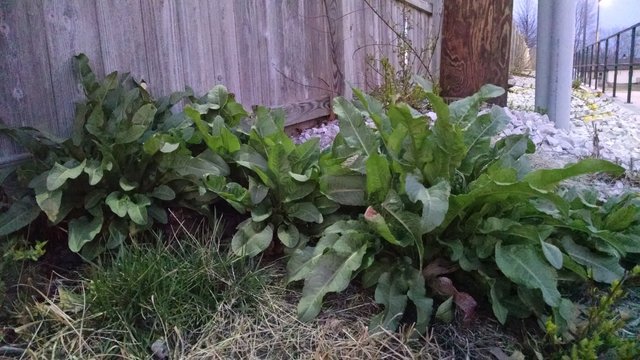
HABITAT
Like so many other wild edibles, Yellow Dock can often be found in “waste areas.” Waste areas are usually untouched or abandoned areas where plants are left free to multiply and spread, due to limited human interference.
These can include fields, marshy areas, abandoned homesteads, roadway ditches, and other more remote locations. In areas away from lawn maintenance and weed killer, Yellow Dock can often be found.

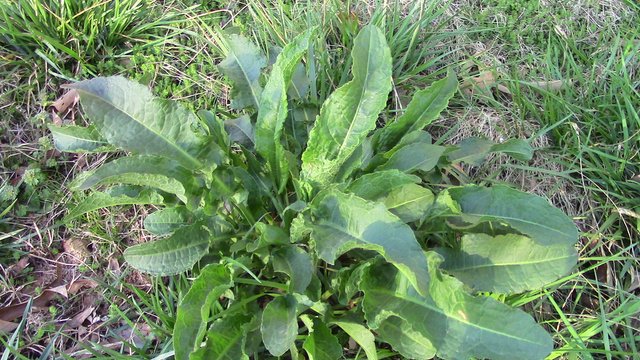
USES
Both the leaves and the roots of Yellow Dock can be used. The leaves are primarily used as a food source, whereas the root can be used medicinally. I would liken the flavor of the raw leaves to that of some mild Common Wood Sorrel. Here’s a little more on using the leaves.
It can be used as a wild leaf vegetable; the young leaves should be boiled in several changes of water to remove as much of the oxalic acid in the leaves as possible or can be added directly to salads in moderate amounts.[7] Once the plant matures it becomes too bitter to consume. Curly Dock leaves are somewhat tart due to the presence of high levels of oxalic acid, and although quite palatable, this plant should only be consumed in moderation as it can irritate the urinary tract and increase the risk of developing kidney stones. It should be used with care during lactation, as it may cause a laxative effect in the infant.
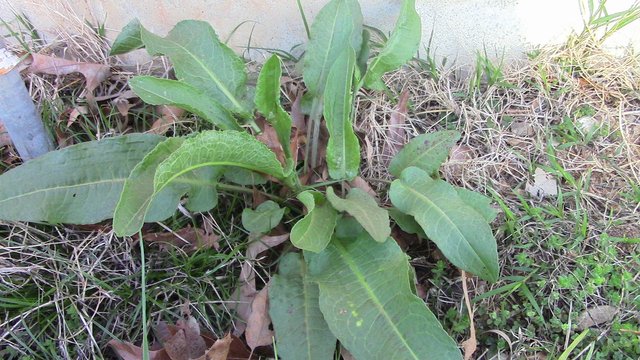
I have eaten these leaves raw in a moderate quantity, but I hope to experiment with cooking (boiling) them soon, as they are very abundant. I have not tried the root yet, but here is some of the info that I found on it.
Yellow dock root is used to help alleviate stomach acid, heartburn and indigestion, according to the University of Michigan Heath System. It is a bitter herb thought to stimulate the digestive function, helping to increase both digestive enzymes and stomach acid. Yellow dock root is taken in tincture form of ¼ to ½ teaspoon three times per day or used in a tea. The tea can be drunk up to three times per day, before meals.
The root has also been used to treat various skin conditions, and as a laxative.

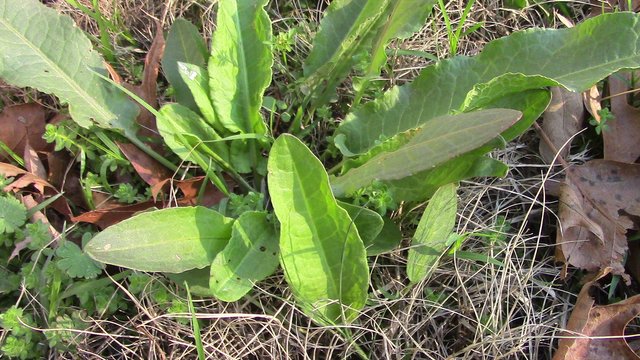
NUTRITION
As with many greens, it is wise to eat Yellow Dock in moderate portions. It is a good source of some vitamins and minerals such as the following.
Dock leaves are an excellent source of both vitamin A and vitamin C, as well as a source of iron and potassium.[8]
As with any wild edible, a local expert will be the best source of a hands-on learning experience. Also, I’d recommend familiarizing yourself with plants like Yellow Dock ahead of time, so that if you ever wind up in a survival situation, you’ll have the information already with you in your head.
The nutritional value that the Yellow Dock and other wild edibles can provide just might save your life one day, which is part of why I am learning about it and experimenting with different ways to eat it. If I can get used to finding the plant now and familiarizing myself with the flavor, it won’t be as hard to include it in my diet later if such becomes necessary.

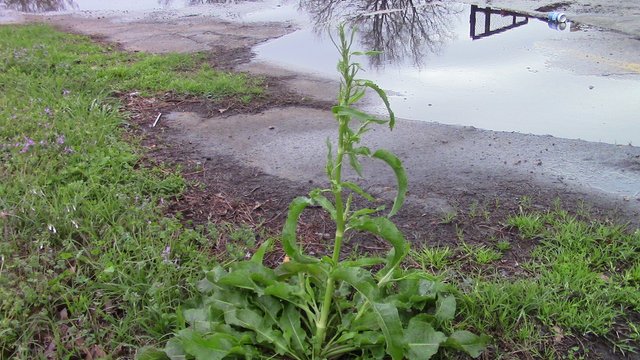
PROPAGATION
The Yellow Dock plant reproduces itself by seeds. Since the seeds are encased in a papery little exterior, they can easily spread by being blown in the wind, caught in the fur of animals, or by floating downstream in the water.
Once a Yellow Dock plant is established, it will come back the following year itself, and often be reproducing by seed as well, until the area becomes almost infested with the plant. It is even considered invasive by some people.

As always, I’m @papa-pepper and here’s the proof:

Here's previous THE EDIBLE OUTDOORS posts:
- 1-Common Yellow Wood Sorrel
- 2-Lamb’s Quarters
- 3-American Gooseberry
- 4-Stinging Nettle
- 5-Sassafras
- 6-Creeping Charlie
- 7-Dandelion
- 8-Plantain
- 9-Mint
- 10-Garlic
- 11-Purslane
- 12-Elderberry
- 13-Prickly Pear Cacti
- 14-Wild Lettuce
- 15-Passionfruit
- 16-Alfalfa
- 17-Chicory
- 18-American Beautyberry
- 19-Wintergreen plus a bonus, the Partridgeberry
- 20-Wild Chives
- BONUS-Getting Information Into Your Head Before You Need it
- 21-AMERICAN PERSIMMON

Except for the quoted sources,

FOLLOW



This is very common in currents, it grows alongside the lagoons or the estuaries, they are family of radichetas, if you eat with the central steeple is a bit bitter.
Excellent post dear friend@papa-pepper
God will light your way so that you have your own self-sustaining farm
That is our hope, but is He has something different for us, then we will do that instead! Keep it up man, and thank you my friend!
@papa-pepper so it tastes a bit sour?
Yes, a bit. Wood Sorrel tastes very much like a sour green apple to me, and Yellow Dock has that sort of undertone. It is still very enjoyable to my palate, and is not terribly sour.
Hello @papa-pepper,
Congratulations! Your post has been chosen by the communities of SteemTrail as one of our top picks today.
Also, as a selection for being a top pick today, you have been awarded a TRAIL token for your participation on our innovative platform...STEEM.
Please visit SteemTrail to get instructions on how to claim your TRAIL token today.
If you wish to not receive comments from SteemTrail, please reply with "Stop" to opt out.
Happy TRAIL!

Thanks.
Upvoted by @foraging-trail
Thank you for following and upvoting @foraging-trail
You can find out more about the Steemit Foraging community and guidelines for being upvoted by the @foraging-trail here and here. Join us In the Foraging-Trail and let's discuss Foraging Related Topics
Thanks again! You rock!
Curly Dock is a great plant to eat! I eat it regularly. My dad had us kids picking it when we were just seven years old or so, along with lambs quarter and poke, when they each were in season. You are right that it's related to Rhubarb -- they are in the same family, along with buckwheat and sheep sorrel (but not the wood sorrel).
I use the youngest leaves in salads, like this one from last week. For cooking, they are too much of one flavor to eat just by themselves, I think. And they change to an olive-green color that most folks wouldn't be too excited to eat, lol. But they are great to mix with other greens, wild or from the garden. I like them in any vegetable soup - they are perfect for a Greek Lemon Soup with their slight sourness.
For cooking, if you want to see how dock compares to other greens, you might be interested in this video that shows cooking 10 different wild greens. Or this one that uses dock for making potlikker, an old-time spring tonic soup, along with some greens. Now that you know dock, you are in for some good eating!
I am always impressed with your outdoor knowledge. Thanks so much for what you have shared!
You're welcome. I'm excited for you and your family to get to enjoy this plant. Dock is so reliable and plentiful - and good. It's real food for regular people!
We will certainly be using it! Thanks.
think i might have seen this before but honestly i feel like i still couldn't tell even if it was right in front of me lol :/ hey papa can you be on my team for the zombie apoc?
I'll be on your team... perhaps I'll have to post a photo of the vehicle I have prepared for it some time...